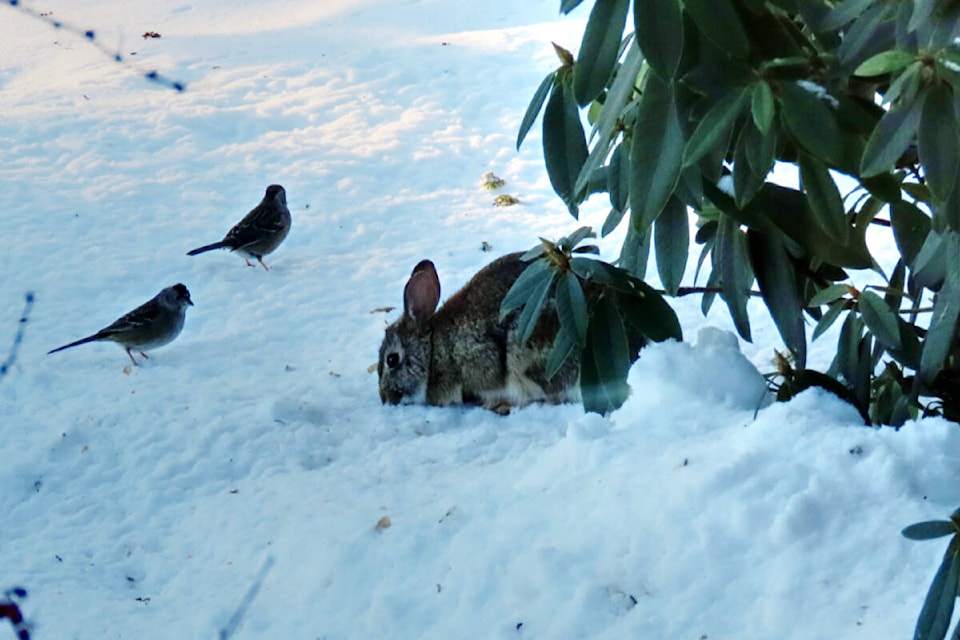By Leslie Cox
Special to the Record
Catching up on some reading recently, a newsletter headline caught my eye: “How to Identify and Get Rid of Rabbits.” Honestly? How does anyone, especially a gardener, not know what a rabbit looks like?
I do. Had a pet rabbit as a kid and I got one for my sister too, just so my parents couldn’t say “no.” Besides, there were two bunnies in a crate in front of a house on my route home from school, free for the taking. (Thinking back, I think the homeowner was counting on a school kid with an affinity for baby animals to “take the bait.”)
My poor, suffering parents did not stand a chance because I conveniently forgot exactly which house was offering the free bunnies. I had been too focused on cuteness overload. So, my dad built a rabbit hutch in the back garden for Fluffy and Flopsy.
Full disclosure: I always accepted full responsibility for my animals so my parents had no complaints. Bought me some latitude in the assortment of pets over the years but those are stories for another day.
Jumping forward to this century, I have to admit to acquiring another “pet” rabbit. Several, in fact, over the more than two decades of creating our current garden. Luckily, John’s back garden domain has been rabbit-free because of the fencing. Except for that one spring when two tiny babies managed to squeeze through the stucco wire fence bordering the farmer’s field.
It is amazing how much plant material baby rabbits can consume, tiny as they were, in a short length of time! But I am good with a fish net and they were safely transported to a forested area far away from any garden.
But my front garden is not completely fenced and I have some choice rabbit food in my landscape. My few tulips fall prey almost every year. (I must remember to dig up and transplant them into the back garden this fall.)
Another botanical dish on my rabbit buffet is my clumps of Carex ‘Silver Sceptre’ (Japanese sedge). But it is really just polite nibbling on those small mounding grasses.
Cannot say the same for my Hakonechloa macra ‘All Gold’ (Japanese forest grass), however. As the garden transitions towards spring, this evergreen golden beacon gradually diminishes in size. Thankfully, it never gets chomped down to a nubbin but I should get my act together and give this stellar grass some protection. We do have some remnants of wire fencing somewhere.
Looking at the list of scent repellents recommended in the article, I am reluctant to use any because of our dog, Sadie. She is trained to stay out of the garden beds but I still don’t like the thought of using ground red pepper flakes, which were near the top of the list. Lysol was also mentioned, as was dried sulfur. Hmmm. Not sure I like the idea of spraying Lysol around my plants or on the soil. And sulfur is a suspect rabbit-control option as it is known to lower soil pH, something that may affect some of your plants. Hanging mesh bags of shaved Irish Spring soap or sprinkling talcum powder on my plants? I think I will pass.
After all, it really is my own fault the rabbit is hanging out in my garden. I made no move to frighten it away from the bird seed accumulating underneath the bird feeder when the garden was buried under the snow. I may be a softie but I also have good rabbit “repellents” in the Cooper’s hawk, red-tailed hawk and owls that live in our neighbourhood. They will have babies to feed soon.
Leslie Cox co-owns Growing Concern Cottage Garden in Black Creek. Her website is www.duchessofdirt.ca
